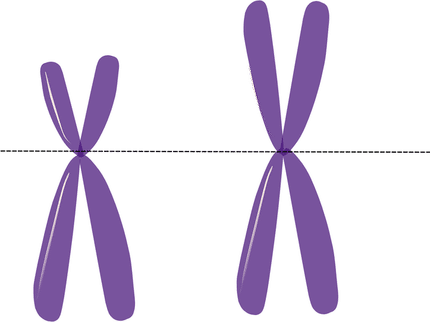Scientists find a brake that acts when cellular motors run too far
Cell-organisation better understood
Advertisement
An international team of scientists has shown how microtubules are interconnected into large networks. Like the poles of a tent, microtubules give shape to cells. By sliding microtubules along each other cells self-organize networks and relay forces that move chromosomes around during cell division. The team unravelled a mechanism that can stop the process of two microtubules sliding along each other before the two microtubules will lose their contact.
The research team harboured scientists from the Max Planck Institute of Molecular Cell Biology and Genetics and Wageningen University. Independently the groups had previously characterized a motor protein that connects two microtubules whilst walking along it and a more passive connector that acts pretty much like molasses between microtubules. What would happen if both proteins were simultaneously present like in cells?
To answer this question postdoctoral researchers Marcus Braun, Zdenek Lansky, and Gero Fink purified all necessary proteins from cells and studied precisely how two microtubules slide along each other in the presence of both components. Marcel Janson, professor of Plant Cell Biology at Wageningen University: “One would think that the sliding velocity of microtubules is set by the ratio of supplied motors and molasses. That was indeed the case when microtubules were happily sliding along one another. However, the system unexpectedly changed the ratio in favour of molasses when the microtubules started to slide apart. So, the resulting microtubule driving force is not constant at all, but changes over time. As a result, microtubules do not separate from each other but stay connected during extended amounts of time.”
An explanation for the phenomenon was found by implementing observations on single molasses-proteins into a quantitative model of microtubule sliding. The binding of individual GFP-tagged proteins to microtubules could be observed using advanced fluorescence microscopy. In between sliding microtubules, the proteins would skid slowly towards the ends of microtubules but would not let go of them. As a consequence, the molasses was compacted when microtubules were sliding apart, explaining the slowdown in sliding.
Stefan Diez group leader at Max Planck and professor at the B CUBE – Center for Molecular Bioengineering at Technische Universität Dresden: “By studying the forces that act between microtubule, we now understand a crucial step in the self-organisation of microtubule networks. We show that microtubules can move along each other to construct the network whilst their ends can stay connected to stabilize the network. In cells, the overlapping part of the microtubules is positioned in the middle of the cell, exactly on the spot where the chromosomes flock together at the beginning of cell division.”
This work has been supported with financial aid from the Netherlands Organization for Scientific Research (NWO), the Deutsche Forschungsgemeinscahft (DFG), the European Research Council (ERC) and the Boehringer Ingelheim Fonds.
Original publication
Other news from the department science
Most read news
More news from our other portals
See the theme worlds for related content
Topic world Fluorescence microscopy
Fluorescence microscopy has revolutionized life sciences, biotechnology and pharmaceuticals. With its ability to visualize specific molecules and structures in cells and tissues through fluorescent markers, it offers unique insights at the molecular and cellular level. With its high sensitivity and resolution, fluorescence microscopy facilitates the understanding of complex biological processes and drives innovation in therapy and diagnostics.

Topic world Fluorescence microscopy
Fluorescence microscopy has revolutionized life sciences, biotechnology and pharmaceuticals. With its ability to visualize specific molecules and structures in cells and tissues through fluorescent markers, it offers unique insights at the molecular and cellular level. With its high sensitivity and resolution, fluorescence microscopy facilitates the understanding of complex biological processes and drives innovation in therapy and diagnostics.























































